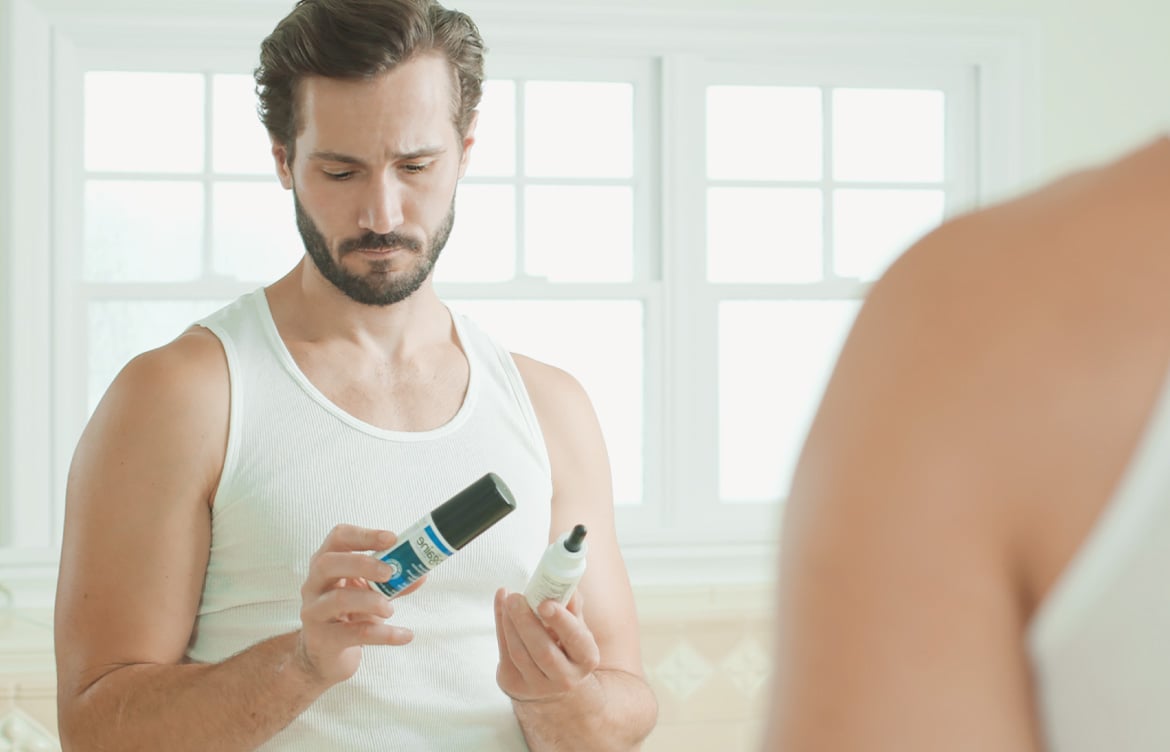If your hair is falling out, you’ve likely scoured the internet for every possible treatment. Hair transplants are effective, but you might wince at the thought of a long recovery period and scarring. Your weekend brunch, Monday meeting, and patience don’t have time for that. Minoxidil is next on your list — a non-invasive, easy treatment, but you might wonder: does Minoxidil stop working after some time?
Picking a hair loss solution can be intimidating, especially if you’ve been disappointed before. But you don’t have to dive into Minoxidil feeling uncertain. The bottom line is you have questions:
- How long does Minoxidil work for people with androgenetic alopecia?
- When does Minoxidil stop working?
Fortunately, we’ve got answers. In this article, we’ll cover how Minoxidil regrows hair, why and when it might stop working.
Let’s start with your first question: Can Minoxidil stop working? Download our guide to Minoxidil to learn everything you know about Minoxidil to regrow your hair.
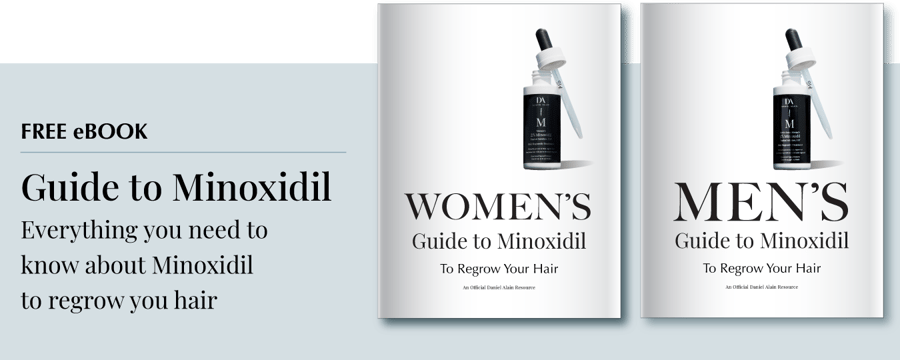
Will minoxidil stop working?
Minoxidil is the gift that keeps on giving — that is, for as long as you continue to use it. The hair loss drug’s effectiveness requires twice daily application every day. Say you notice some results after six months of using Minoxidil: you’ll notice a quick reversal of effects if you stop applying.
One doctor at Donovan Hair Clinic says patients with genetic hair loss must use Minoxidil forever to maintain results. Otherwise, regrowth will halt and you’ll continue to lose your hair at the same rate as before or worse, even faster. Now, why does minoxidil stop working?
Assuming you’re a responder, your scalp needs Minoxidil to catalyze its active ingredient and regrow your hair. Once you stop using the drug, your scalp doesn’t hold onto it. It washes away along with your hair regrowth potential. But remember that it’s safe to keep using Minoxidil as long as you need it.
Here, we’re talking about genetic hair loss cases. But Minoxidil doesn’t work the same for you if you have another hair loss cause. Consider telogen effluvium — stress-related hair loss. Minoxidil might help you regrow hair initially, but eventually the stressor causing your hair loss will disappear. Your hair will resume its regular hair growth cycle and won’t need Minoxidil anymore.
Let’s explore another scenario. You use Minoxidil religiously and never miss an application. You continue to use it for years, and suddenly, your hair regrowth stops and shedding resumes.
What gives?
Dermatologist Jeff Donovan has an explanation. Assuming you have genetic hair loss, your genes may be multiplying as you age, quickening your shedding and balding. The genes work faster than Minoxidil in some cases. Donavan cites a study of baldness in 52,000 men that confirms the complicated nature of genes and the increase of hair loss genes as you age.
Think of Minoxidil as exercise and hair follicles as your body. At 20, you have more muscle mass and energy to burn way more calories with exercise than you can at 50. Minoxidil works the same way — age factors (hair loss genes in this case) slow down progress.
HOW DOES MINOXIDIL WORK TO REGROW HAIR?
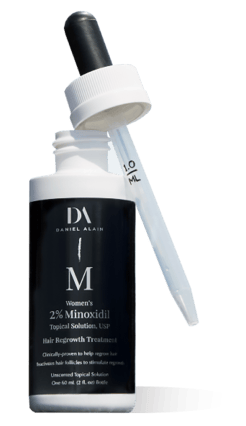
Minoxidil is a vasodilator, and was first a blood pressure medication, not a hair loss solution. Researchers thought the drug dilated blood vessels, carving an easier path for oxygen and nutrients to travel across your body — including to your hair follicles.
Now, extra nutrients certainly won’t hurt your hair. Your hair follicles crave omega fatty acids and protein to regulate hair growth, while Vitamins A, D, and B12 are linked to regrowth, too.
Additionally, doctors once chalked the drug’s effects to its interference with the hair growth cycle, lengthening the anagen phase (growth) and shortening the telogen phase (resting).
But neither nutrients nor hair growth cycle activity make up Minoxidil’s show-stopping regrowth mechanism.
Daniel Alain’s research team of dermatologists and scientists recently discovered the novel SULT1A1 enzyme — the catalyst that awakens Minoxidil’s active component, Minoxidil sulfate. The right scalp enzyme activity metabolizes the drug to work its regrowth magic on your hair.
But not everyone has SULT1A1 enzyme activity.
DOES MINOXIDIL WORK FOR EVERYONE?
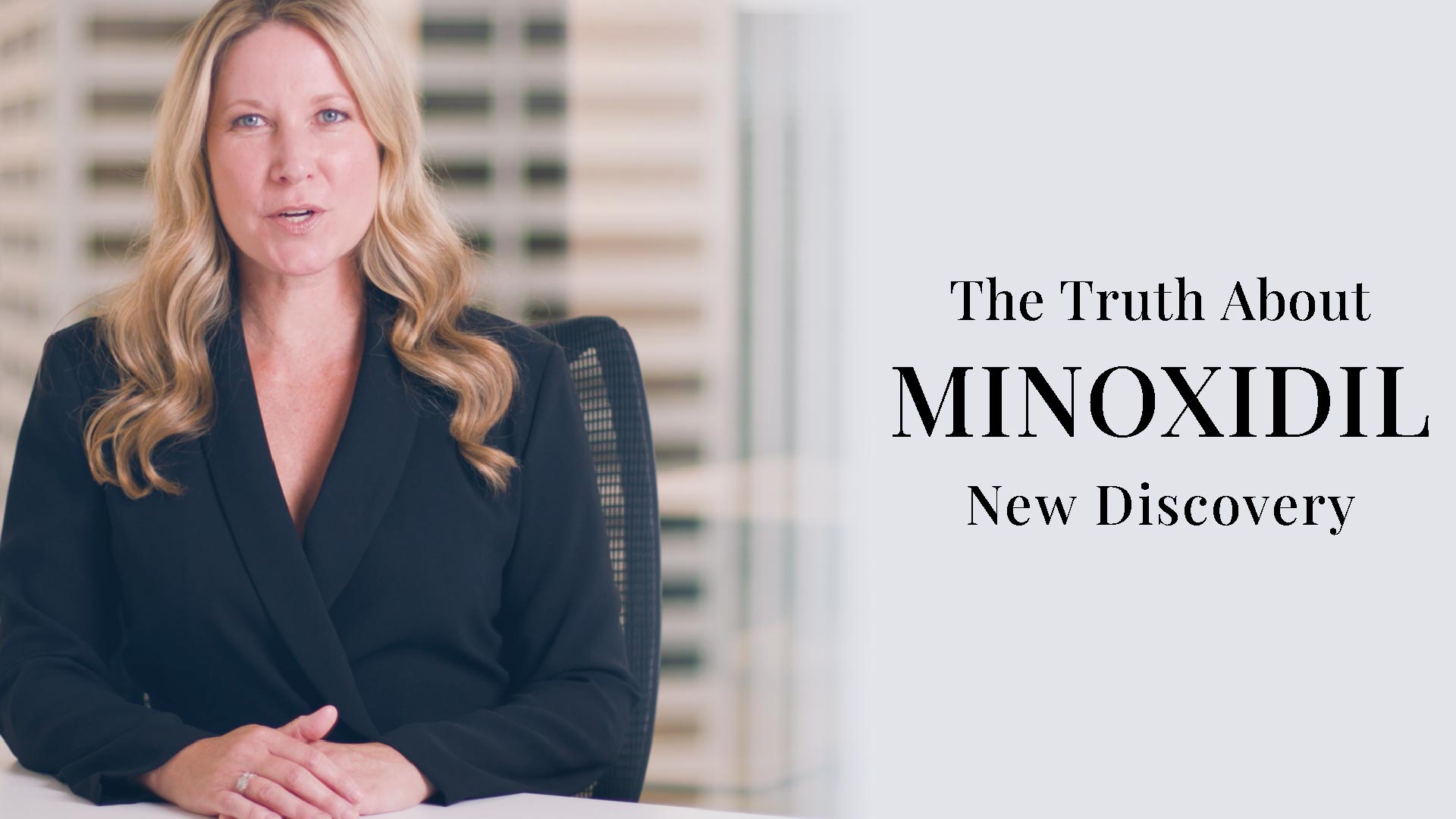
Unfortunately, Minoxidil won’t regrow everyone’s long-lost locks. Brand-name varieties like Rogaine® love to tout promising effectiveness claims, but they’re often based on specifically selected studies. The reality is that Minoxidil only works for 30-40% of people with genetic hair loss.
Up until recently, nobody knew why. Sure, poor adherence to the application schedule might cause ineffectiveness for some users. Additionally, not waiting long enough before washing out the product could inhibit results. But those are easy fixes. What boggled dermatologists, doctors, and scientists was this:
Why were thousands of people applying Minoxidil for months without seeing any results?
The common denominator in users who saw results was SULT1A1 scalp enzyme activity (Daniel Alain’s breakthrough discovery). If Minoxidil didn’t work for you after months of treatments, the lack of enzyme activity is why.
But we ran into another dilemma: how do you know whether you have SULT1A1 enzyme activity in your scalp? Without this information, people might still take Minoxidil for months without knowing for certain if it would work.
How Can I Tell if Minoxidil Will Work for Me?
Daniel Alain’s Minoxidil Response Test (MRT) is the only way to determine whether Minoxidil will work for you.
We back every single one of our hair loss solutions with science. Peer-reviewed studies, world-renowned scientists and dermatologists, and a CLIA-certified lab are at the forefront of our operation. And we wouldn’t have it any other way — the most luxurious and effective, patented hair solutions can’t thrive with anything less.
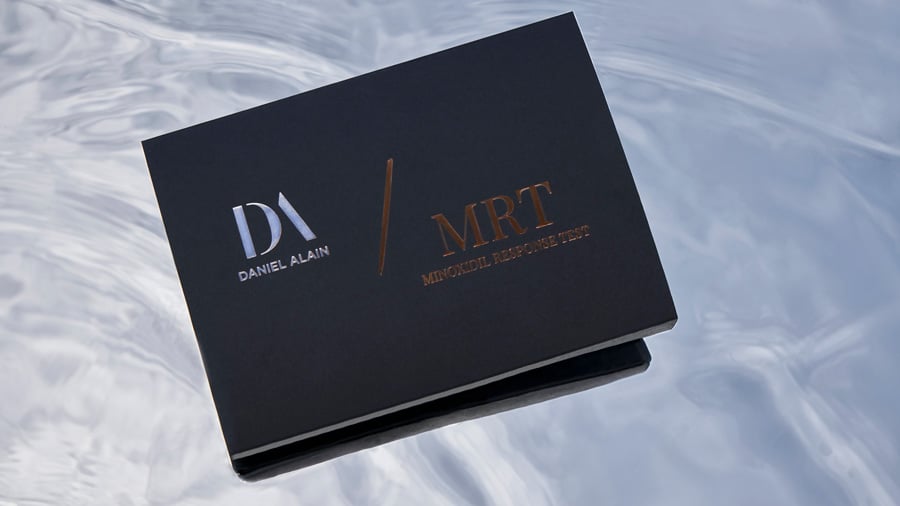
How Does Minoxidil Testing Work?
All you have to do is order your MRT kit for men or women, register it, take a hair sample (six strands is all you need), and send it to our CLIA-certified lab.
You’ll know whether it’s worth embarking on Minoxidil treatment within just one week! Remember, no other hair loss solution provider offers any remotely similar or effective test. Daniel Alain is the only place to purchase a Minoxidil Response Test.
PICK THE BEST HAIR LOSS SOLUTION FOR YOU AT DANIEL ALAIN
Bottom line, does Minoxidil stop working for everyone? Not quite. Only for people who stop treatment, misapply the drug, or have genetic hair loss complications. Like every hair loss solution, Minoxidil has pros and cons.
Your lifestyle and preferences dictate the best hair loss solution for your needs — but Minoxidil isn’t the only answer. Daniel Alain crafts the world’s finest wigs, made with the top 10% of premium European human hair. No waiting, no side effects — just luscious, silky-smooth hair every day.
Have more questions? Luxurious hair is within reach. Talk to one of our hair stylists today about your options!
book a free consultation
Our stylists will help you find the right hair loss treatment for you
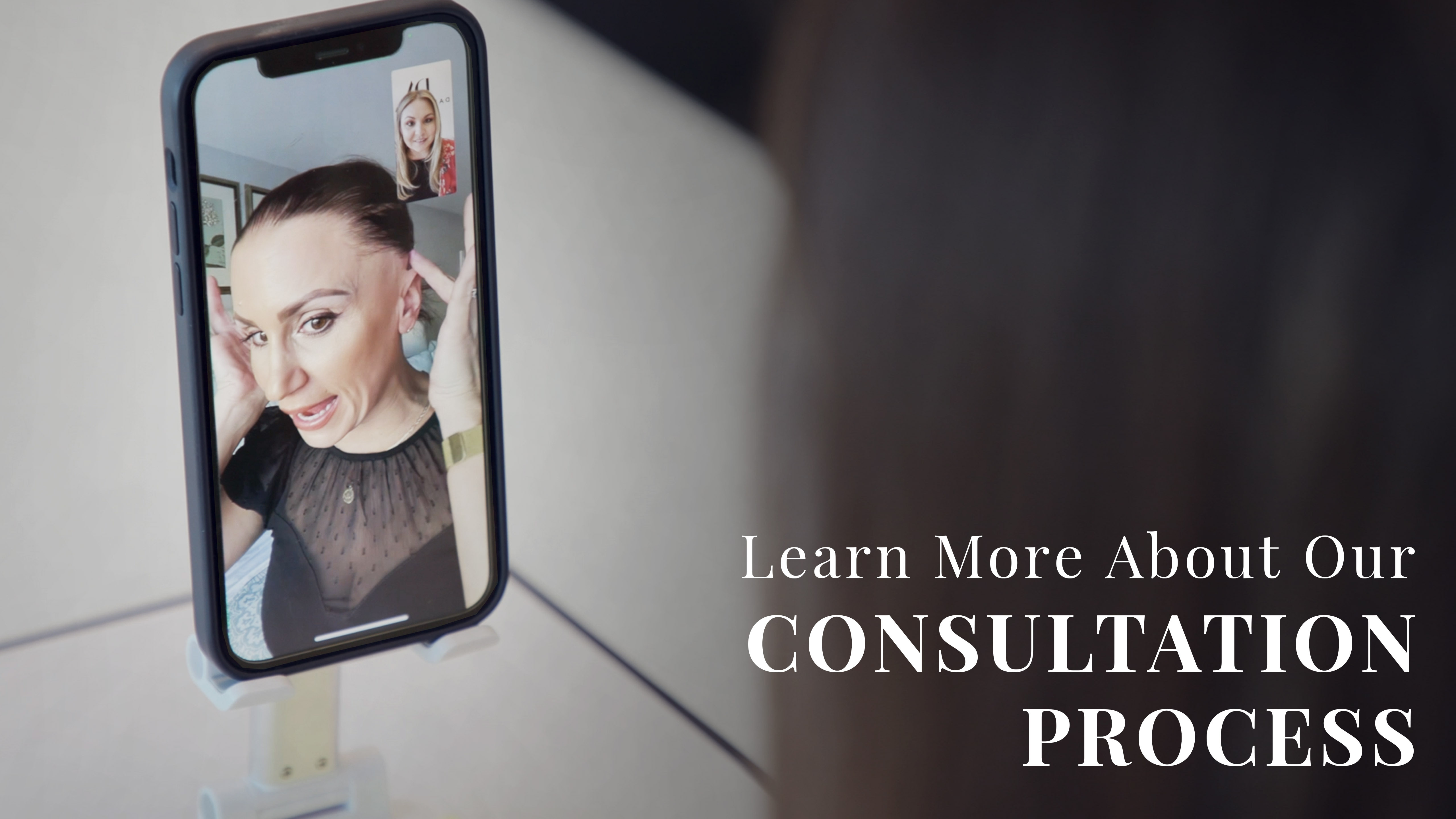
Frequently Asked Questions
Does Minoxidil Lose its Efficacy?
Sometimes Minoxidil loses efficacy if hair loss genes in people with androgenetic alopecia multiply faster than Minoxidil’s hair regrowth mechanism. Additionally, Minoxidil will stop working as soon as you stop taking it or apply it incorrectly.
Do You Have to Use Minoxidil Forever?
Yes. Experts recommend you use Minoxidil for years to maintain regular hair regrowth and limit hair loss. However, the average Minoxidil timeline varies depending on your hair loss cause.
How Do You Apply Minoxidil?
Minoxidil has two forms: liquid and foam. Here’s how to apply the liquid solution:
- Part your hair into separate sections.
- Apply the solution to affected areas of your scalp using the applicator (1ML).
- Massage the solution into your scalp with your fingers.
- Leave the solution on your scalp for at least four hours.
While side effects are rare, some people report allergic contact dermatitis with the liquid solution. You might try applying the minoxidil foam solution instead, and here’s how to do it:
- Wash your hands with cold water
- Part your hair into a few different sections, noting areas of hair thinning.
- Take the cap off and dispense the foam onto your fingers.
- Apply the foam to affected scalp areas, starting from the back.
- Massage the solution into your scalp.
- Leave the solution on your scalp for at least four hours.
How Often Do You Need to Use Minoxidil?
You must apply Minoxidil 1-2X daily (once in the morning and once at night) to see results. Remember to read the instructions label for more details.
Can You Develop a Tolerance to Minoxidil?
No. Experts assert that Minoxidil responders won't develop resistance to the drug over time. However, people with genetic hair loss might experience their condition worsen enough to mitigate Minoxidil’s effects, though. If you feel like Minoxidil is becoming less effective, other factors like seasonal hair shedding may be at play.
What Happens if Minoxidil Stops Working?
If Minoxidil stops working, you might notice your hair loss, thinning, or shedding resume as it did before you started treatment. However, discontinuing Minoxidil is the most common reason for it to stop working.
Your next step is to consider Daniel Alain’s MRT to know for sure if it’s just a matter of time, as well as our Enzyme Booster. And if you’re still not happy with Minoxidil, there are always other hair loss solutions. You might consider another hair loss solution like INTACT or a premium human hair wig like our voluminous Style!
How Do You Know if Minoxidil is Not Working?
This is a tricky question because Minoxidil doesn’t often show results in the first six months of usage. Some users even report results delayed as much as nine months!
To make things more confusing, you might notice more hair shedding in the first few weeks of treatment — an effect that looks like the drug isn’t working. However, initial shedding is a good sign, indicating your scalp’s response to Minoxidil. Just consult a doctor if it lasts more than a few weeks.
If you take Minoxidil for nine months or more and still don’t see results, chances are the drug isn’t working. But the best way to know for certain if Minoxidil will work is to take Daniel Alain’s MRT.
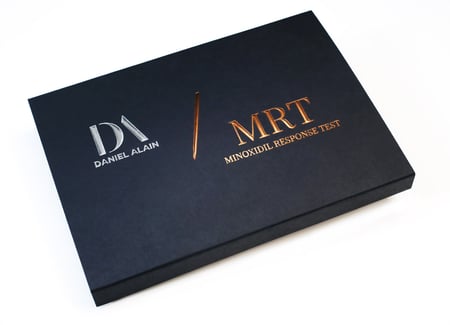
How Long Does it Take for Minoxidil to Work?
Minoxidil takes between 6-9 months to work — a heavy con within Minoxidil’s pros and cons. However, you might notice some initial shedding within the first few weeks of treatment. Don’t worry; that just means your body is responding to the drug!
How Long Can You Use Minoxidil?
You can use Minoxidil for your entire life. The drug will continue to maintain hair regrowth as long as you use it. However, some responders dislike Minoxidil’s side effects that may develop over time, like dizziness, allergic contact dermatitis, and hypertrichosis (excessive body hair).
Is Minoxidil Harmful Long-term?
Minoxidil is safe for long-term use for most people, although most providers recommend against taking it if you’re under 18 years old. Additionally, some users report unsavory side effects like hypertrichosis, allergic contact dermatitis, and erectile dysfunction. Consult your doctor before taking Minoxidil.
Can Minoxidil Worsen Hair Loss?
Yes, Minoxidil causes hair loss (shedding) at the beginning of your treatment. But this is a normal side effect and indicates your body’s response to the drug. It should only last a few weeks, so consult a doctor if shedding persists for longer.
What Happens if You Miss a Day of Minoxidil?
If you miss a day of Minoxidil, it’s not a huge deal. Just take it as soon as you realize you’ve forgotten. However, if you’re close to your next scheduled dose, wait until then to apply it again. Remember to always follow the instructions on the package.
How Do You Increase Minoxidil Absorption?
The best way to boost Minoxidil absorption is to take Daniel Alain’s Booster — an enzyme supplement that increases your SULT1A1 enzyme levels by 7X! Additionally, healthy eating and exercise are always welcomed supplements to a healthy hair regimen.


